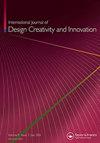Prototyping in smart product design: Investigating prototyping tools to support communication in the early stage smart product development
IF 2.5
Q4 ENGINEERING, MANUFACTURING
International Journal of Design Creativity and Innovation
Pub Date : 2023-06-06
DOI:10.1080/21650349.2023.2222115
引用次数: 0
Abstract
ABSTRACT Smart product design (SPD) is more complex than traditional product design (TPD), requiring intense interdisciplinary collaboration. It is well understood that prototypes are an effective means to facilitate communicating design concepts. However, there is limited research concerning prototyping preferences of design disciplines involved in SPD. The research explores the use of prototyping in smart product development. Specifically, it aims to understand the preferences and dimensions of fidelity of different prototyping tools that can support communication in the SPD process for various stakeholders. This paper presents two surveys. The first investigates the use of prototyping tools by different disciplines involved in SPD versus TPD. The second compares elements of key prototyping tools used across disciplines within SPD. Results show that the interactivity and environment dimensions of fidelity of prototyping tools motivate differences in preference between SPD and TPD. Moreover, user depiction and contextual information are key elements of prototyping that support designers in communicating interactive and environmental qualities of SPD concepts.智能产品设计中的原型:研究在智能产品开发早期支持通信的原型工具
智能产品设计(SPD)比传统产品设计(TPD)更为复杂,需要跨学科的紧密协作。众所周知,原型是促进设计概念交流的有效手段。然而,关于SPD中涉及的设计学科的原型偏好的研究有限。本研究探讨了原型设计在智能产品开发中的应用。具体来说,它的目的是了解不同原型工具的偏好和保真度,这些工具可以在SPD过程中支持各种利益相关者的通信。本文提出了两项调查。第一篇研究了SPD与TPD中涉及的不同学科对原型工具的使用。第二部分比较了SPD中跨学科使用的关键原型工具的元素。结果表明,原型工具的交互性和保真度的环境维度激发了SPD和TPD之间的偏好差异。此外,用户描述和上下文信息是原型设计的关键元素,它们支持设计师传达SPD概念的互动性和环境质量。
本文章由计算机程序翻译,如有差异,请以英文原文为准。
求助全文
约1分钟内获得全文
求助全文
来源期刊

International Journal of Design Creativity and Innovation
ENGINEERING, MANUFACTURING-
CiteScore
3.80
自引率
27.80%
发文量
15
期刊介绍:
The International Journal of Design Creativity and Innovation is an international publication that provides a forum for discussing the nature and potential of creativity and innovation in design from both theoretical and practical perspectives. Design creativity and innovation is truly an interdisciplinary academic research field that will interest and stimulate researchers of engineering design, industrial design, architecture, art, and similar areas. The journal aims to not only promote existing research disciplines but also pioneer a new one that lies in the intermediate area between the domains of systems engineering, information technology, computer science, social science, artificial intelligence, cognitive science, psychology, philosophy, linguistics, and related fields. The journal covers, but is not restricted to, the following topics: ·Theories on Design Creativity and Innovation ·Cognition of Design Creativity ·Innovative Process ·Inventive Process ·Analogical Reasoning for Design Creativity and Innovation ·Design Synthesis ·Method and Tools for Design Creativity and Innovation ·Representation of Design Creativity and Innovation ·Education for Design Creativity and Innovation ·Concept Generation and Inspiration.
 求助内容:
求助内容: 应助结果提醒方式:
应助结果提醒方式:


